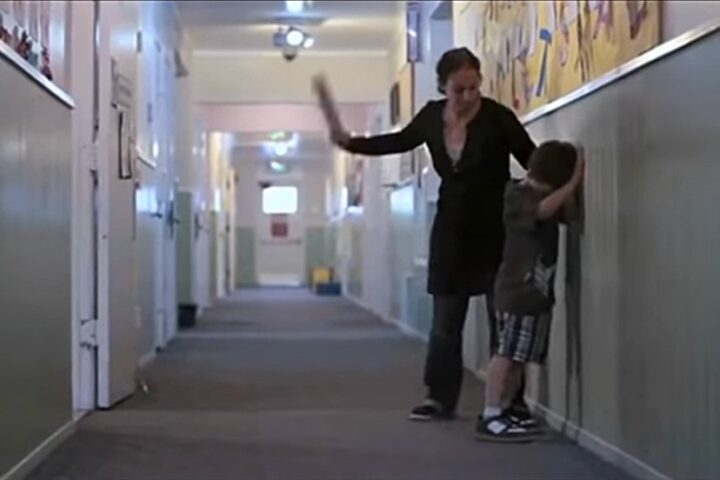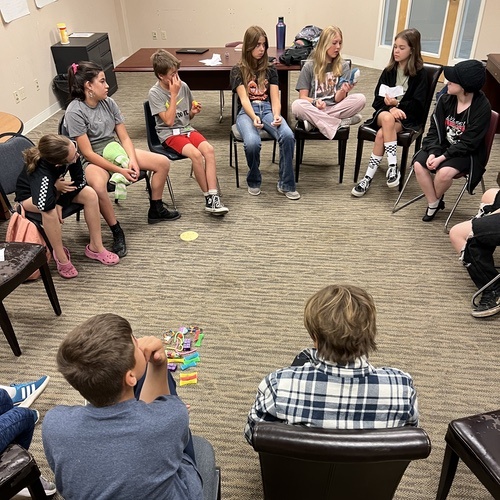“A restorative approach provides a way to build community, while also intervening with problems in a way that can be transformative for all involved…”
— from the book ‘Circle in the Square’ by Nancy Riestenberg
There’s the carrot, and there’s the stick. And there’s the tendency to see carrots and sticks as the only reasonable options for bringing about a change in a person’s behavior.
I’m currently reading a book by Dominique Smith, Douglas Fisher, and Nancy Frey: Better Than Carrots or Sticks: Restorative Practices for Positive Classroom Management. The book was chosen as the first selection for the Pagosa Peak Open School ‘book club’ for staff members — or more accurately, as a research tool for the PPOS ‘Professional Learning Community’.
Authors Smith, Fisher and Frey apparently worked at the same school while writing the book, and in the first half of the book, they share some of their experiments with, and research into, classroom management techniques, including their conclusion that carrots (rewards for good behavior) and sticks (punishments for bad behavior) fail to produce optimum results over the long term, in an educational setting.
They mention, in particular, that punishments often have more to do with a urge for revenge, rather than a desire for positive change. This suggestion aligns well with a term I used in Part Two of this editorial series, to describe a typical response to ‘bad behavior’ and to the violation of rules and laws.
“Retribution”.
The word means, literally, “payback”.

An alternative process known as “restitution” means “to restore what was lost.” This idea is central to Restorative Practices — a collection of processes currently under development at Pagosa Peak Open School.
Disclosure: I currently serve on the PPOS Board of Directors, but this editorial reflects only my own opinions, and not necessarily the opinions of the other Board members, or the PPOS staff, or the larger PPOS community of students and parents.
Conflicts occur, in life. A conflict might involve two people, a group of people, or a whole society. In some cases, a rule or law may have been created to define acceptable behavior, and although no actual person was harmed, the rule was violated.
Time for ‘retribution’? Punishment? Payback? What is the ultimate outcome of this approach?
How about ‘restitution’? Healing? Restoring relationships?
There is some evidence that a ‘restitution’ approach ultimately generates a superior outcome.
To prepare for this alternative type of discipline, classes at PPOS typically participate in a daily ‘circle’ meeting where students learn about healthy relationships and healthy responses, just as they might learn about reading or math.
The ‘circle’ not only helps to establish a shared culture… it also helps prepare everyone for the eventual occasions when conflicts occur. One tool used in these ‘circles’ is the ‘talking piece’ — similar to the ‘talking stick’ used in American Indian traditions. The person holding the ‘talking piece’ shares their story or idea; the rest of the circle is expected to listen silently and respectfully.
A ‘Keeper’, who is also a participant in the circle, takes on the job of keeping the ‘talking piece’ moving and helps to maintain the protocols.

When conflicts do occur, one of the elements of Restorative Practices at PPOS may be a ‘conference’ where various participants are able to share their experiences and insights.
A restorative conference provides a forum for discussing and resolving the issues involved between students or between students and staff. Sometimes the situation is serious, with the ultimate possibility of suspension or expulsion; sometimes the situation is merely troubling. In some cases, a restorative conference may include parental involvement.
In all cases, the conference is more formal than the community-building circles and restorative chats; however, it retains some of the same foundational elements.
- A circle configuration
- A Keeper
- A talking piece
- Guidelines
At PPOS, the conference is preceded by ‘pre-conference interviews’ with a trained facilitator. Pre-conference interviews (with offenders, victims, key participants) take place before the conference to determine who should be present, and which issues should be discussed. The pre-conference interviews allow offenders and victims to choose whether to engage in a restorative process, or to choose, instead, a traditional ‘punishment’ approach, which might involve suspension, or — in the most serious cases — expulsion.
I asked PPOS Assistant Director Emily Murphy, who heads up the Restorative Practices project at the school, if she had some thoughts about where this project is headed. She wrote:
“Helping students learn about and facilitate conflict resolution has been one of the joys of my work at PPOS. This young population sees conflict for what it is: people. They often go in with true curiosity — ready to be vulnerable, share their perspectives, find connections and be open to hearing others. They don’t shut themselves off to others who may have wronged them; they don’t walk away or use hurt as a way to solve a problem.
“I have learned so much from watching them work toward resolutions, and am grateful that these moments have spilled over into my own growth. Seeing their work has helped build my own confidence, openness and action when it comes to facing confrontation, miscommunication, or harm.”
Some of us — though certainly not all of us — believe that one of the consummate goals of humankind is the creation of a fair and equitable society, free from fear and violence.
It seems to me, so long as our society uses violence and punishment as its primary tools for controlling behavior, our children will grow up believing those are the best tools.
But what could our future world look like, if our children grew up learning that ‘restitution’ — instead of ‘retribution’ — was a viable option?
Over the past couple of years, Pagosa Peak Open School has begun moving in that direction, experimenting with the creation of a different type of culture, using Restorative Practices. Many other schools and school district in America and around the world are currently running the same experiment, and sharing stories on websites and in books, documenting the results. Can we change the way humans interact, in conflict situations?
Where this ultimately ends up, we will have to wait and see.

